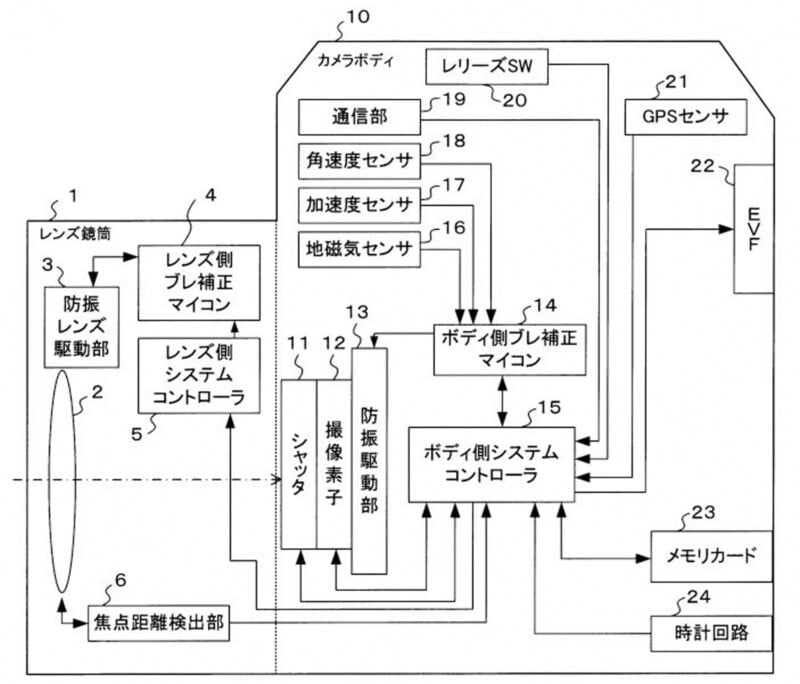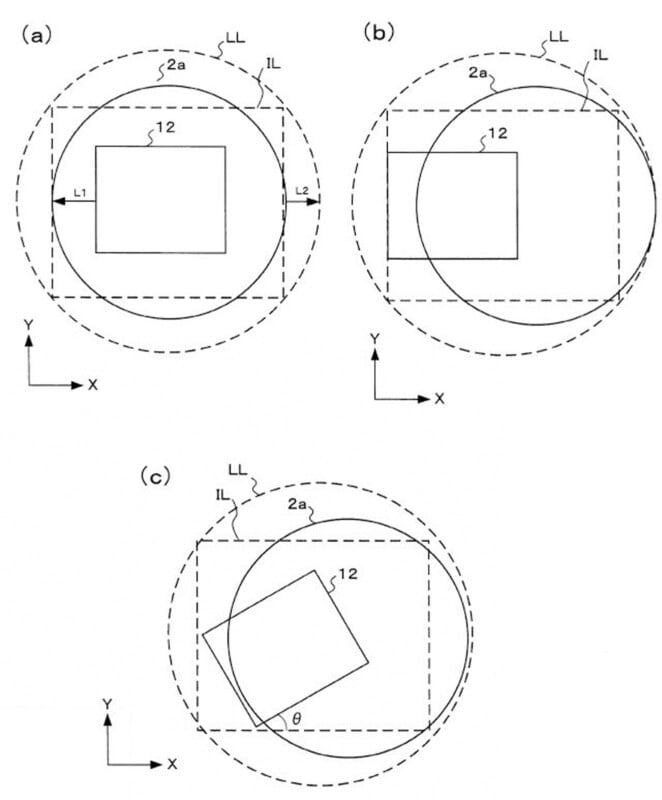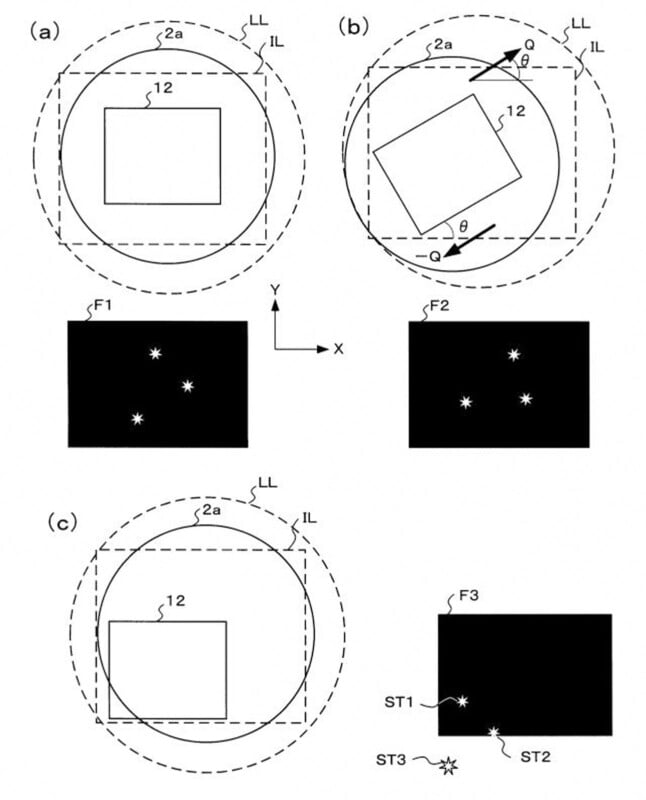New OM Patent Looks Like an Extreme Version of Pentax’s AstroTracer
![]()
OM System has been granted a patent for an astronomy tracking function that combines a camera’s in-body image stabilization (IBIS) system alongside optical image stabilization (OIS). Based on the documentation, the system appears to be an extreme version of Pentax’s AstroTracer feature.
OM System applied for the patent in early 2019, although it was only issued in Japan on July 6, 2023.
In background information for the patent, spotted by AsobiNet, OM System explains that because the Earth rotates, stars in the night sky appear as star trails when doing long-exposure photography, and extended shutter speeds are often required at night. The North Pole Star, Polaris, which is actually a triple star system despite its appearance as a single point, remains practically stationary in the night sky when shooting the northern sky.

With a star tracker, photographers can capture images with longer exposure times while maintaining tack-sharp stars. To achieve this feat, the star tracker aligns a user’s camera with Polaris and then moves at the appropriate pace to compensate for the Earth’s rotation.
OM’s patent explains how it could use an OM System camera’s IBIS and an M.Zuiko lens’ OIS to move the image sensor and lens to establish concordance between the image plane and the rotating Earth, resulting in sharper images of the night sky at longer shutter speeds.
AsobiNet notes that while the patent is exciting and showcases extreme movement to compensate for Earth’s rotation, astrophotography typically demands fast-aperture lenses. A cursory glance at OM System’s M.Zuiko lens lineup shows that the company does not make speedy lenses with image stabilization.


The M.Zuiko Digital ED 12-100mm f/4 IS PRO is the widest lens with image stabilization, but an f/4 aperture is not ideal for astrophotography. One of OM’s best astrophotography lenses, the M.Zuiko Digital ED 7-14mm f/2.8 PRO, lacks IS, as do the M.Zuiko Digital ED 12mm f/2 and M.Zuiko Digital ED 17mm f/1.2 PRO primes.
For the proposed patent to make sense from a commercial perspective, there is quite a bit of work to be done on OM’s part. However, OM System has never shied away from the unusual.
Notably, only one company, Pentax, has implemented astronomy tracking into its interchangeable lens cameras. Pentax’s AstroTracer function requires the use of an optional GPU unit attachment, and it combines Pentax’s Shake Reduction (SR) mechanism and GPS data to enable longer shutter speeds. AstroTracer effectively tracks the relative movement of stars in the night sky, allowing astrophotographers to capture cleaner, sharper photos.

The Pentax K-3 III can utilize AstroTracer without GPS by tracking stars based on their movement. This requires the camera to capture a preliminary image to measure the movement of the stars. This method allows for AstroTracer functionality in areas where a magnetic field affects GPS performance.
Further, the K-3 series, along with Pentax K-1 and K-1 Mark II DSLR cameras, have a built-in GPS system so they utilize typical AstroTracer functionality without the optional GPS attachment.
The prospect of using an OM System camera and IS-equipped M.Zuiko lens to capture extremely lengthy images of the night sky without any star trails is undoubtedly appealing.
Update July 9: The article has been updated to reflect that not all Pentax cameras require the optional GPS attachment to use the impressive AstroTracer feature.
Image credits: Background of header photo licensed via Depositphotos.